Beginner’s Digital SLR Crash Course: Complete guide to mastering digital photography basics, understanding exposure, and taking better pictures.
£4.30
Who Else Wants To Take Better Pictures?
That’s what this guide is all about; making the most of your digital camera, so that you can create beautiful photographs. You won’t find all the complicated technical jargon that fills other books and blogs. I was like you at one point – I was just a guy who had no clue how to use all the fancy features of my new digital camera, and it was an extremely frustrating experience. My pictures were awful, and I was starting to question why I spent so much money on a DSLR.
Sound familiar?
I decided I wouldn’t settle for mediocre results, so I spent years of trial and (mostly) error to figure out all the tips and little known tricks that I’ll help you learn in this concise digital photography guide.
Give Me 24 Hours – And I’ll Make You A Better Photographer
I’m going to teach you how to take better photos today. You’ll see an improvement in your photos right away and they’ll keep getting even better as you practice. Students in my digital photography workshops pay $100 per hour to see drastic improvement in their photography, and you get all the same information at a fraction of the cost. I believe in the 80/20 rule; I’m going to give you 20% of the tricks that will get 80% of the results so you can spend more time doing what you love.
Are You Harnessing The Creative Power Of These 3 Camera Modes?
Shooting in automatic mode can produce a decent photo every now and then, but you have zero creative control. The digital SLR cameras on the market offer several better modes to create beautiful photos. I’m going to walk you through each one of those modes, one at a time, so that you know exactly how and when to use them. The camera modes we’ll master together include:
- Aperture Priority mode (Av, A)
- Shutter Priority mode (Tv, S)
- Manual Mode (M)
Warning: If You Shoot In Auto Mode, You Have Wasted $1000
Prices have come down significantly, but cameras are still really expensive. There’s no point in having an expensive camera if you’re just shooting in Auto mode, because you could have spent a tenth the money for the same results. If you don’t take advantage of the more advanced modes that you’ll master with this guide, you’ve wasted hundreds or even thousands of dollars on a tool you can’t use properly.
11 More Things You’ll Learn About Your Digital Camera
In addition to all the shooting modes, I’ll teach you everything you need to know about:
- Image size
- Image quality
- Memory cards
- Color space
- ISO speed
- Digital noise
- Histograms
- White balance
- Composition tips
- Photo storage tips
- Camera accessories for the (not so) beginner
Scroll up, click the BUY NOW button and get started right now!
5 Simple Ways To Be A Better Photographer Than 99% Of Beginners
Once you understand the basics in this book, it’s really not hard to be a great photographer. I’m not promising that you’ll sell out galleries in New York, but I guarantee if you follow these five simple principles that are covered in depth within this guide, you’ll stand out from the crowd of beginners.
- Set yourself up for success by pre-programming your camera.
- Capture tack sharp photos, every single time.
- Find subjects that jump off the screen.
- Harness the correct camera mode for the situation.
- Effectively use composition principles to lead the viewer’s eye.
Scroll up, click the Buy Now button and get started today!
Read more
Additional information
| Language | English |
|---|---|
| File size | 8993 KB |
| Text-to-Speech | Enabled |
| Screen Reader | Supported |
| Enhanced typesetting | Enabled |
| X-Ray | Enabled |
| Word Wise | Not Enabled |
| Sticky notes | On Kindle Scribe |
| Print length | 73 pages |



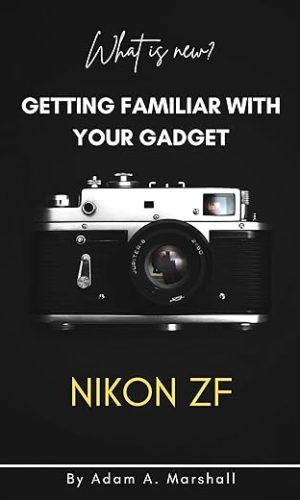
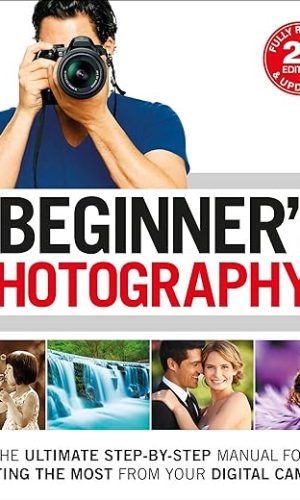
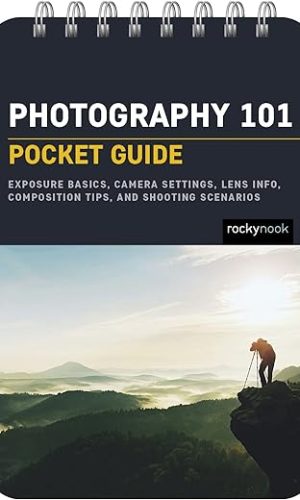
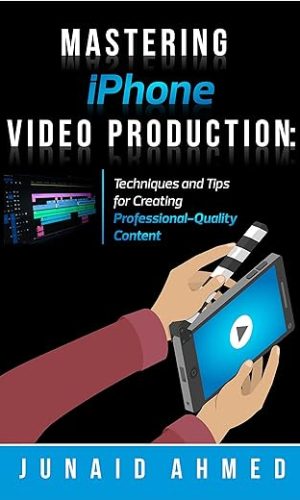
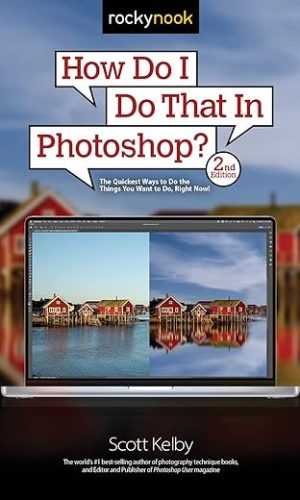
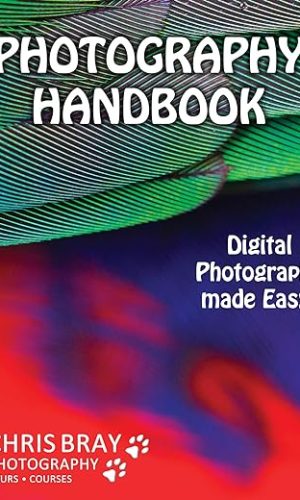
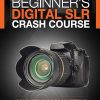
by Tnuctip
This little ebook covers all the bullet points in two Getting off Auto and one cheapo (mostly useless) online course, and does so very effectively. It’s little sections are written in plain English, with enough detail to get the message across, but stopping before you blank out with information overload. It has settings and camera locations for Canon and Nikon, which apply to my fairly recent Z50, and includes a few digital Menu locations and function buttons on the camera body.
If I’d read this book first, I think I might have delayed my first course and had a good play with the camera until I had reached the limit of my understanding. My tutor was great, but learning how to get the best photos of subjects I hadn’t attempted was a bit wasted without more experience with my camera. This little book almost gives you permission to play with your new expensive camera settings and the confidence to make mistakes and understand how to fix them. Excellent first photography book for total non-technical beginners.
by The Reviewer
“Beginner’s Digital SLR Crash Course” is an excellent resource for anyone who wants to improve their digital photography skills. The book provides a comprehensive guide to the basics of digital photography, including understanding exposure, using manual mode, and composition. The writing style is clear and easy to follow, making it accessible for beginners who are new to DSLR cameras. The author’s emphasis on practical application and real-world examples is particularly helpful, as it provides readers with hands-on experience and helps to reinforce the concepts presented. The book also includes helpful tips and tricks for taking better pictures, which will be appreciated by both amateur and professional photographers. I appreciate that the author covers a wide range of topics, from equipment selection to editing software, making it a well-rounded guide for anyone looking to improve their digital photography skills. Overall, “Beginner’s Digital SLR Crash Course” is an excellent resource that I highly recommend to anyone looking to take better pictures and master the basics of digital photography.
by Amazon Customer
I have had a camera for ages and have always stuck it on auto. I was suggested this book by a friend and I love it.
Everything is described well and there are good analogies for how the different settings on a camera work. It really helped me get my head around things like ISO.
There are also some little projects that you are given settings to set on your camera and a subject to take a photo of. Then more settings to apply so you can see how the changes drastically affect the result.
I have already recommended this to a friend and they are enjoying it as much as I did.
by Elaine Thomas
This little book is a quick read, nothing is covered into extreme detail as in other publications. It does however give a very good (basic) insight into DSLR-photography. I don’t think the price is justified for the amount of information one gets, especially in comparison to other books found on the internet. But it will give a solid foundation if you want to know more about digital SLR-cameras.
by Mr. Nigel. Bevans
As above, this book is basic, basic, basic, which is why it is brilliant! I have owned a Canon T5 for three years and learnt more from this book about how to use it than from any other book or video I have read or watched. I want to enjoy photography not endure it. This book has shown me how to understand the basics, given me confidennce to try and most importantly made me want to and shown me how to use my camera off auto. Thank you.
by Mr. Nigel. Bevans
After reading the first few paragraphs of this book, I felt like I was being taught by a friend. This was my very first purchase of a Kindle book and my first read of a book in years due to a problem with my sight. Once started I couldn’t put my Kindle down. It was jam packed with all I needed to know – none of it in a heavy way either – as I mention it was like a friend guiding me through and it left every question answered. Having small stories and humorous anecdotes also helped make this book one of the best reads I have ever had.
As for my photography I saw a difference the next time I picked up my new DSLR. No longer afraid of all the buttons I got experimenting quickly and now I am never out of ‘Manual’ mode.
I cant recommend this book enough – I simply LOVE IT! 🙂
(I have included one of the first photos I took in Manual mode)
by Penguin Lover
I used to use a manual SLR and knew how to use it, but life got in the way and I used a ‘point and shoot’ camera to take photos as time and budget didn’t allow for anything else – but I do have lots of photos of my kids growing up. Have recently got a digital SLR but found my knowledge had faded as to what all the terminology meant and also had not idea how to set anything in manual mode. This book is brilliant as it makes everything easy to understand. It has saved me battling with the instruction book too and made me much more willing to mess around with the settings. Thank you
by Amazon Customer
I haven’t really been doing photography for long, just as a hobby really, however i’ve been shooting on auto mode since I started.
Speaking with photographer friends when I show them my photo’s, they respond with things like “your exposure is too high”, “Look at the noise!” & the worst one “WHAT? AUTO MODE?!?!?”
This book absolutely blew me away, in 45 minutes I learned SO much.
I live by a general rule, don’t learn to ‘do’, learn to understand, because if you understand you can ‘do’ better.
This book helped me understand everything that’s going on with my camera. I would very much recommend this to anyone struggling to get out of auto mode…
You can even start to sound like a pro when you understand the terminology!
Thanks to the author, a true inspiration and great teacher.